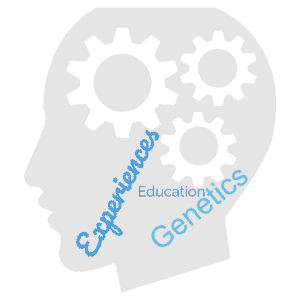1. 引言
机器学习是人工智能的一个重要分支,近年来随着大数据和计算能力的发展,它已经成为许多现代技术的核心。本文将带你了解机器学习的基本概念,帮助你构建一个清晰的知识框架,为后续深入学习打下基础。
我们将从图灵和洛夫莱斯关于“机器能否思考”的经典讨论出发,逐步介绍机器学习中的一些核心术语和概念,帮助你理解这个领域的理论基础和实际应用。
2. 背景:机器能思考吗?
2.1 学习型机器
“机器能思考吗?”这个问题最早由图灵在其经典论文《计算机器与智能》中提出。这个问题不仅引发了关于人工智能的哲学思考,也为机器学习的发展奠定了基础。
在那篇论文的第7节“学习型机器”中,图灵反驳了洛夫莱斯的观点。洛夫莱斯认为,机器只能执行程序员明确编写的指令,无法自主学习。换句话说,机器的所有“思想”都来自人类的输入。
图灵则认为,虽然初始配置(即程序的初始状态)确实会影响机器的行为,但这并不是全部。就像人类的学习过程一样,机器也可以通过“教育”和“经验”来不断改进自己的能力。
⚠️ 踩坑提醒:很多初学者误以为机器学习就是写规则,实际上它更像“让机器自己学会写规则”。

2.2 人类的学习过程
图灵将人类的学习过程分为三个部分:
- 遗传因素(先天结构)
- 正式教育(有计划的学习)
- 非正式经验(生活中的实践)
他指出,一个成年人的思维能力并不完全由童年时期的脑结构决定,就像一个程序的学习能力也不应仅受初始代码的限制。
类似地,在机器学习中:
- 系统的初始配置相当于“遗传”
- 模型训练相当于“正式教育”
- 模型选择和调优则相当于“非正式经验”

2.3 学习中的学习
| 人类学习 | 机器学习 |
|---|---|
| 遗传 | 系统初始配置 |
| 正式教育 | 模型训练 |
| 非正式经验 | 模型评估与选择 |
这种类比构成了机器学习的理论基础。理解这一点有助于我们更深入地掌握机器学习的本质。

3. 机器学习的基本概念
要真正理解机器学习,需要掌握一些核心术语。以下是最基础、最重要的几个概念。
3.1 机器
在机器学习中,“机器”通常指代计算机,更准确地说,是图灵机(Turing Machine)的现代实现。也就是说,我们使用的计算机本质上是一个可以执行任意算法的通用计算设备。
✅ 通俗理解:你用来训练模型的笔记本电脑,就是一个图灵机的现实版本。
3.2 学习
Mitchell 对“学习”的定义如下:
如果一个程序在执行某个任务时,其性能随着经验的积累而提高,那么这个程序就是在学习。
在机器学习中,这种“经验”通常体现为训练数据,而“性能”则通过误差函数来衡量。
✅ 示例:神经网络在训练过程中,误差逐渐减小,说明它在“学习”。
3.3 模型
模型是机器学习的核心。它是对现实世界中某种现象的数学抽象,通常由参数和结构组成。
常见模型包括:
- 线性回归、逻辑回归
- 支持向量机(SVM)
- 神经网络
⚠️ 选择模型时要根据任务类型(分类、回归、聚类)和数据特点来决定,不要盲目追求复杂模型。
3.4 数据集
数据集是训练模型的基础。它通常由多个样本组成,每个样本包含:
- 特征(Features):输入变量
- 标签(Labels):输出变量(在监督学习中)
常见的数据集来源:
- UCI 机器学习仓库(archive.ics.uci.edu/datasets)
- Kaggle 数据集平台
✅ 数据预处理建议:
- 数据归一化(Normalization)
- 数据集划分(训练集 / 验证集 / 测试集)
- 批处理(Batching)
3.5 预测与误差函数
预测是模型的核心功能。误差函数(也称损失函数)用于衡量预测值与真实值之间的差距。
常见误差函数:
- 均方误差(MSE):适用于回归任务
- 交叉熵损失(Cross-Entropy):适用于分类任务
✅ 误差函数的作用:
- 指导模型参数的更新方向
- 评估模型的性能
3.6 梯度
梯度是误差函数对模型参数的偏导数向量。它指示了误差函数在当前点的上升最快方向。
数学表示如下:
$$ \nabla f = \begin{bmatrix} \frac{\partial f}{\partial x_1} \ \frac{\partial f}{\partial x_2} \ \vdots \ \frac{\partial f}{\partial x_n} \end{bmatrix} $$
✅ 示例:函数 $ f(x, y) = \sin(x) + \sin(y) $ 的梯度为:
$$ \nabla f = \begin{bmatrix} \cos(x) \ \cos(y) \end{bmatrix} $$
在点 $ (\pi, \pi) $ 处的梯度为:
$$ \nabla f(\pi, \pi) = \begin{bmatrix} -1 \ -1 \end{bmatrix} $$
梯度在机器学习中用于:
- 梯度下降法(Gradient Descent):最小化损失函数
- 参数更新:调整模型参数以提高预测精度
4. 总结
本文介绍了机器学习的基本概念,包括:
- 图灵与洛夫莱斯关于“机器能否学习”的讨论
- 人类学习与机器学习之间的类比关系
- 机器学习中的核心术语:机器、学习、模型、数据集、预测、误差函数、梯度等
这些概念构成了机器学习的理论基础,是后续学习各种算法和应用的前提。
✅ 建议:理解这些基础概念后,可以进一步学习监督学习、无监督学习、深度学习等进阶内容。